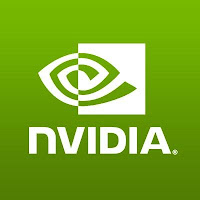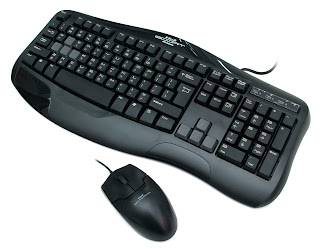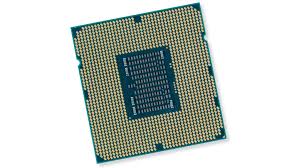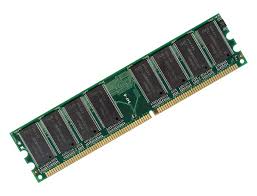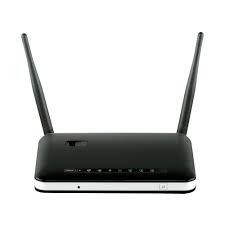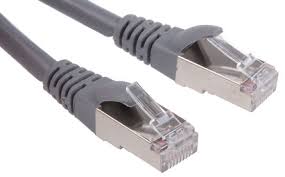- I shall show the Connection and configuration of a display.
- I shall show how to connect the chosen controller to the platform.
- I shall finally explain the installation and configuration of a game.
Connection Video:
In order to connect a display to the source, such as a PC or a Console, a cable is needed to transfer the visual images and audio. There are 3 main types of cable for this job, HDMI (High-Definition Multimedia Interface) Cable, VGA (Video Graphics Array) Cable and DVI (Digital Visual Interface) cable. For the purpose of this task, I used a HDMI cable. This is because while the VGA and DVI cable convey the visual images from the source to the display, they transfer audio separately. Due to this, I chose HDMI so that I could transfer both audio and video signals to the display with one cable.
 |
| HDMI |
 |
| VGA |
 |
| DVI |
This allows for less cable management and an easier connection between source and display. In order to connect the display, all there is to do, is to plug both end of the cable into the HDMI ports on both the computer and the monitor. This allows for the video and audio signal to be transferred from PC to Display. The exact same method is applicable not just for modern PC's such as the one in the video but devices such as game consoles like the Xbox One and PlayStation 4. However, old consoles such as the PlayStation 1 and the original Xbox didn't use HDMI cables, so a different approach was required. Older consoles didn't use HDMI, DVI or VGA cables, they used composite AVI(Audio Video Interweave) cables instead. The colored RCA connectors are plugged into the display such as a Television set and the SCART plug is connected to the appropriate port on the console. Upon doing this, the video and audio signals can be conveyed from system to display.
 |
| Composite Cables were required to connect older consoles such as the PlayStation to displays. |
PC's are not the only devices that use cables such as HDMI, VGA and DVI. Other devices include Consoles such as the Xbox One and the PS4, DVD players and Digital Cameras. The most used currently is the HDMI cable due to most if not all modern devices capable of outputting content at 720p or above. Older cables such as DVI and VGA are dying out as a result. The other reason HDMI is more widely used is that it also supply the audio signal as well, dispensing of the need to have a separate audio cable.
Aside from monitors, such as the one in the video above, there are other types of display such as Television sets and portable displays. An advantage of a portable display opposed to a monitor is that the portable display can be taken and used in far more places than a larger and heavier monitor could. However, a disadvantage is that a portable display depends on a battery to run, opposed to mains electricity, which means it need to be constantly recharged to work, while a monitor doesn't have that problem.
Configuration Video:
Upon connecting a display to a device such as a PC or console, the display has settings that can be configured and altered. Examples of settings that can be changed on a monitor include, brightness, over-scan, gamma, aspect ration, contrast and colour. These allow the user to alter the image onscreen in a way that suits the user.
The user can alter the brightness should the screen become too bright or dark. This can be accessed by a button located on the actual monitor in most cases. However, there are sometimes exceptions and brightness can be changed via an option menu on the PC itself. Aspect Ratio can also be altered. This is when the user can change the width and height of the image onscreen via selecting the aspect ratio ratio option when configuring a display. This is especially useful when images onscreen are either squashed or go off the screen when over scan is off. Over Scan is when the image is too large and the display is not set to configure that image to fit the screen. This feature is available on all modern monitors and TV's.
 |
| Since Over Scan is so prevalent on modern display, tests such as these are made to see if displays have over scan. |
The advantage in having a modern display is that there are multiple options in order to alter the display to suit the users preferences and they are generally thin and light, allowing for great portability, however, an older display such as a CRT monitor has a faster refresh rate allowing for actions to be displayed onscreen faster than a more modern monitor with a slower refresh rate. This would be specially useful for competitive gamers who play in tournaments and leagues. The faster response times would allow for greater precision and could mean the difference between a win or a loss. Despite this advantage, the actual CRT sets while capable of resolutions such as 1080p, are rarely made to support that high a resolution, not allowing for great visual quality and the actual CRT monitors and TV's are large and bulky, giving a poor aesthetic look and lack of portability.
Connecting a controller to the game platform:
Controller Connection:
Upon the connection and configuration of the display, the chosen HCI is then to be connected to the device. For the purpose of this task, I connected a wired 360 controller to the PC. In regards to the actual connection process, I just plugged the USB at the end of the controllers wire into a USB port on the front of the PC.
I chose a 360 controller for this task for multiple reasons, the first reason , is the game I installed and configured, Assassins Creed 4 Black Flag, is an Third Person Action Adventure game. Due to this, I felt a controller would be more suitable to use to control a game of that nature. Other games that would take advantage of a controller are Fighting and Racing games. The other reason behind the use of a controller in that situation was due to the universal appeal of using a controller to game. While the vast majority of people have used a keyboard for day to day activities such as typing up word documents and using it to use search engines, more people have used the controller for gaming. As such, anyone new to gaming would benefit by using a controller as their HCI.
Despite the advantage of a game-pad for people new to gaming and player who like genre's such as Fighting, Racing and Third Person Games, the Mouse and Keyboard has its advantages as well. If someone was to play genres such as First Person Shooters and Strategy games, the mouse and keyboard is the better option. First Person Shooters can take advantage of the superior precision and sensitivity of a mouse and a keyboard gives an RTS game enough buttons in order to appropriately map game function's and control's to a key while with a controller, would have to map multiple features to one button. Another advantage to mouse and keyboard over a controller is that if someone is accustomed to gaming, learning to use mouse and keyboard isn't too much of a learning curve, and once learnt, the extra precision of a mouse and the large amount of buttons on a Keyboard, allows for a greater level of control when playing a game.
Installing and Configuring a game:
Installation Video:
Upon the connection of a controller to the platform, games can be accessed and played. I showed the Installation of Assassins Creed 4 Black Flag via Steam. Through game services such as Steam, all necessary files needed for the games are automatically installed and put into a single or multiple related folders and work immediately after the download is complete. Also, downloads from services such as Steam allow the user to allocate where the files shall be stored before download. IN order to keep the primary C drive fast and clean, games should be downloaded to the D drive or any other alternative forms of storage. Games can be installed through two primary methods. Disc or Digital. The most prominent form of installation in the past was disc. Inn order to install a game via disc, all that is needed is for the disc to be put into the platforms disc tray. Upon the platform being started is to follow the set up steps given by the disc itself. The main advantage of having a game in disc format is that it can be easily sold on. However, due to the physical nature of the disc, it can be lost and/or broken.
The other main way of installing game is digital. There are 3 main digital stores for the PC platform. These are Steam, Uplay and Origin. All three primarily sell game's and other media products such as films and music. Their console equivalents are PlayStation Network and Xbox Store. The most well known and popular of the three is Steam. It has the ability to be installed on a PC and one of its main features is that it keeps any game purchased from the store in one definitive library for practical use. Due to this, it is better than Uplay and Origin due to the fact all games purchased from Steam in one large library, while with Origin and Uplay, the game cannot be accessed at one definitive place. Also, Steam has large sales, with some deals being arguably the best on the market. Uplay and Origin lack these vital features to make them the best online stores and services. It also is known for its large sales, especially in the summer. One large advantage to digital over disc is that the prices for digital within the sales, especially on steam are far cheaper than on disc. Another advantage is that due to its digital nature, it does not take up any physical room and a digital game cannot be broken or lost. However, once a game key has been activated, it cannot be sold, which prevents second hand digital PC games.
Configuration Video:
Once a game has been installed, it can then be loaded up and be configured. On console, configuration options are severely limited and graphical and resolution setting are generally fixed due to the fixed nature of a console's hardware. However, these settings can be configured on PC in order to give the best possible performance for the player.
When it comes to graphical settings in PC games, there are several that can be altered to provide the best performance. Resolution of the game can be changed, with the most common options being resolutions from 720p up to 1080p. However older game's have resolutions as low as 480p and modern game's have resolutions as high as 1440p or even 2160p, the coveted 4K resolution. However, since resolution can affect performance, if the display is set to a resolution that the display does not show such as a 1080p monitor playing a game set to 1440p, it is best to turn the resolution down to enable better performance.
Graphical features such as texture and environmental quality can be altered as well. These features enable the games textures and environmental graphics to be altered to suit the systems hardware.The general options for settings such as these are Low, Medium, High and Ultra. This is so that the game can be altered to improve performance should the systems hardware be outdated or lower than the recommended spec.
Other graphical features can be changed such as shadows and reflections. These can be altered to cater to the hardware used. Other features exist such as anti aliasing, god rays and volumetric fog. Anti-Aliasing is when jagged textures can be smoothed out in order to improve the graphical fidelity of a game. God Rays are lighting effects that mimic crepuscular rays. These are in-game rays of light that radiate from the direction of the in-game sun. These are generally graphical effects designed for high end hardware and are enabled to increase the realism of a games graphics.
Finally, PC games allow the activation of V Sync (Vertical Synchronization). This is when the games frame rate is set to synchronize with the monitors refresh rate. This is in order to prevent screen tearing. This can decrease performance, so this should only be set if the PC's hardware is high end.
Visual References:
https://www.avforums.com/article/do-expensive-hdmi-cables-make-a-difference.10801
https://en.wikipedia.org/wiki/VGA_connector
https://en.wikipedia.org/wiki/Digital_Visual_Interface
https://techexplainer.wordpress.com/2012/03/21/ports-and-slots-in-laptops/
http://en.community.dell.com/support-forums/peripherals/f/3529/t/19468380
https://www.engadget.com/2010/05/27/hd-101-overscan-and-why-all-tvs-do-it/
https://www.microsoft.com/accessories/en-us/products/gaming/xbox-360-controller-for-windows/52a-00004
https://cdkeyprices.com/steam-vs-origin-vs-uplay-which-is-better-and-why
http://www.geforce.co.uk/whats-new/guides/assassins-creed-iv-black-flag-graphics-and-performance-guide
http://www.gamingzap.com/ps3-ps2-ps1-component-audio-video-cable.html
Written References:
https://en.wikipedia.org/wiki/HDMI
https://en.wikipedia.org/wiki/Overscan
https://en.wikipedia.org/wiki/Crepuscular_rays
https://hardforum.com/threads/how-vsync-works-and-why-people-loathe-it.928593/


















